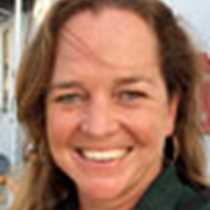Española Island
Our magical journey through the Galápagos Archipelago began when we landed on the easternmost island of the group, San Cristobal: a beautiful island of old and young geology, rich wildlife and beautiful beaches. An unforgettable sunset over the tropical Pacific Ocean – the perfect start to an adventure of a lifetime!
A short overnight sail took us to the small, eroded island of Española, one of the oldest of the group at about 4 million years of age. As such, it has started to sink down below the waves, but is also home to an abnormally large number of endemic species.
We started our day at Gardner Bay, to the west of the island, and enjoyed the most spectacular snorkeling conditions along the tiny Gardner Islet. A steep wall, absolutely carpeted in fascinating invertebrates, provided a home to myriad fish species as well – including tiny creatures such as the charming barnacle blennies, finding refuge within empty barnacle shells. The crystal-clear, eighty-degree waters allowed us to appreciate all this beauty to the fullest: We swam among large schools of king angel fish, surgeon fish, creole fish, snapper and grunt, and also noticed more camouflaged individuals such as hawkfish, cabrilla, Galápagos octopus, spiny lobster and more. Sea lions delighted many with their acrobatics, and even the occasional shark moved sinuously along the sea bottom.
We reluctantly dragged ourselves out of the water, among promises of more treats to come – and we were not disappointed! Our Zodiac captains and naturalists took us to a wonderful long, white beach, home to countless sea lions. We were able to spend the late morning strolling among these charismatic marine mammals, watching as the adults recovered from their long stints at sea, while the pups played around on the sand and in the shallows. A young Galápagos hawk posed for ages, watching the fun while we got amazing photos of this unique bird of prey – the most important terrestrial predator in the archipelago.
We repositioned to Punta Suarez, to the east of the island. The afternoon was even more delightful, as hundreds of waved albatross have started to return to Española, the one place on earth where they come to breed. Hundreds of these majestic birds circled the island, ready to brave a perilous landing. We walked among their colonies and learned about their fascinating natural history, all while watching the behavior described by our naturalists with our own eyes. Nazca boobies and their chicks, swallow-tailed gulls, mating hawks, endemic lava lizards and mockingbirds, Darwin finches and Galápagos doves – these just added to what has made up an absolutely unforgettable experience. All the nature documentaries in the world cannot prepare one for the thrill of experiencing this exuberant wildlife first hand.




